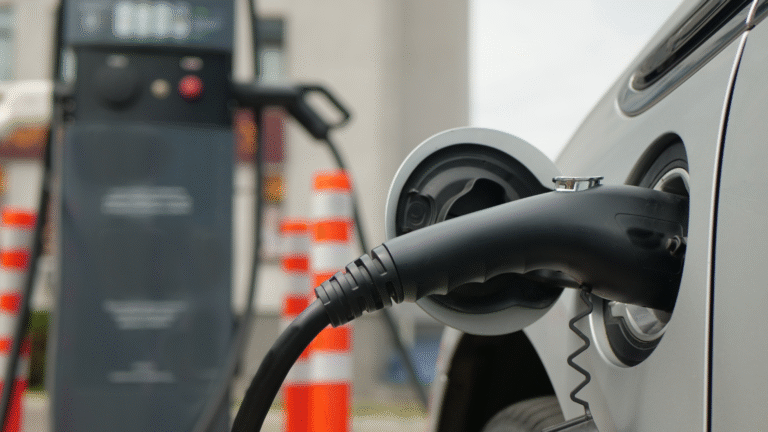Highway rest stops are the backbone of safe, long-distance road travel. As electric vehicles become common, rest stops play a new role: reliable fast-charging hubs that allow drivers to refresh while their car gets the range it needs. Expanding chargers at rest stops is a logical priority, but delivering it requires planning, funding and coordination between governments, power networks and private operators. This article explores why rest-stop charging matters, practical design principles, challenges and how to scale chargers along Australia’s major highways.
Table of Contents
- Why rest-stop charging is critical for EV adoption
- Design principles for effective rest-stop chargers
- Funding and delivery models that work for corridors
- Technical constraints and solutions (power, reliability)
- Operational considerations (maintenance, amenities, safety)
- Scaling the network: corridor priorities and rollout sequencing
- FAQs
- Conclusion
1. Why rest-stop charging is critical for EV adoption
Rest stops are natural places to charge because travellers already plan breaks every few hours. Good rest-stop chargers reduce range anxiety, support regional tourism and make long-distance EV driving practical. Without a reliable corridor of well-maintained fast chargers, many drivers will hesitate to switch to electric for cross-state travel.
2. Design principles for effective rest-stop chargers
a) Charger type matched to stop duration
Highway stops need fast chargers (150–350 kW) to add meaningful range during short breaks. For short coffee or restroom stops, higher-power DC chargers are essential; longer service stops can combine DC and AC.
b) Multiple bays and redundancy
Build more than one fast-charging bay per rest stop and ensure redundancy so a broken unit doesn’t strand multiple cars. Redundancy reduces queuing and keeps reliability high.
c) Clear approach lanes and safe siting
Charger bays should be easy to access, with safe entry/exit, good lighting and protection from heavy-vehicle traffic. Separate parking for EVs avoids conflicts.
d) Integrated amenities and dwell-time services
Coffee, toilets, picnic areas, and local information make waiting pleasant and increase local economic benefits.
e) Payment simplicity and roaming
Tap-to-charge, unified billing and roaming between networks reduce user friction.
3. Funding and delivery models that work for corridors
a) Public-private partnerships (PPP)
PPP models combine public corridor planning and private deployment expertise. Governments often underwrite early investment in low-traffic segments.
b) Grants and co-funding for rural gaps
State and federal grants help build chargers in low-return areas, ensuring geographic equity.
c) Retailer-hosted models
Fuel and retail chains upgrade sites for EV customers, combining fuel, food and fast charging in one stop.
d) Utility-led builds with commercial operators
Utilities can invest in grid upgrades and host chargers, contracting commercial operators for day-to-day operations.
4. Technical constraints and solutions (power, reliability)
a) Grid capacity & costly upgrades
High-power chargers often require significant upstream capacity. Solutions include battery buffers to smooth demand, on-site solar for daytime offset, and negotiating staged grid upgrades with distributors.
b) Energy management & V2G potential
Smart load management and vehicle-to-grid testing help mitigate peak demand and improve economics.
c) Resilience and backup power
Remote rest stops benefit from battery backup or hybrid solutions to ensure consistent service during outages.
5. Operational considerations (maintenance, amenities, safety)
- Regular maintenance contracts and SLAs keep chargers functional.
- 24/7 monitoring and local technician rosters reduce downtime.
- Security (lighting, cameras) adds traveller safety.
- Accessible bays and clear signage ensure inclusivity for all drivers.
6. Scaling the network: corridor priorities and rollout sequencing
Start by mapping high-volume routes and tourist corridors, then prioritize:
- Interstate highways and major freight routes
- Tourism-heavy routes (coastal and outback corridors)
- Rural connectors with long distances between towns
A pragmatic rollout pairs high-capacity hubs every 100–150 km with smaller regional chargers feeding into the network.
FAQs
Q: How far apart should fast chargers be on major highways?
A: Aim for stations roughly every 100–150 km on primary corridors so most EVs can travel comfortably without lengthy detours.
Q: Do rest-stop chargers need commercial operators?
A: Yes — operational expertise for maintenance, payments and uptime improves reliability over ad-hoc installs.
Q: Can solar power these stations?
A: Solar helps offset energy but rarely alone powers high-speed charging; pairing with batteries and grid connections is the practical solution.
Conclusion
Highway rest-stop charging is a critical piece of Australia’s EV transition. Designing effective stops means placing high-power, redundant chargers at safe, amenity-rich locations and solving technical constraints like grid upgrades through batteries, smart management and hybrid funding models. With coordinated planning and public-private partnerships, rest stops can shift from mere refuelling points to reliable EV hubs that support long-distance travel, tourism and freight — turning range anxiety into confident planning.
Meta Description: Learn why more fast chargers at highway rest stops are essential for Australia’s EV future — design principles, funding models, technical solutions and rollout priorities for reliable corridor charging.
